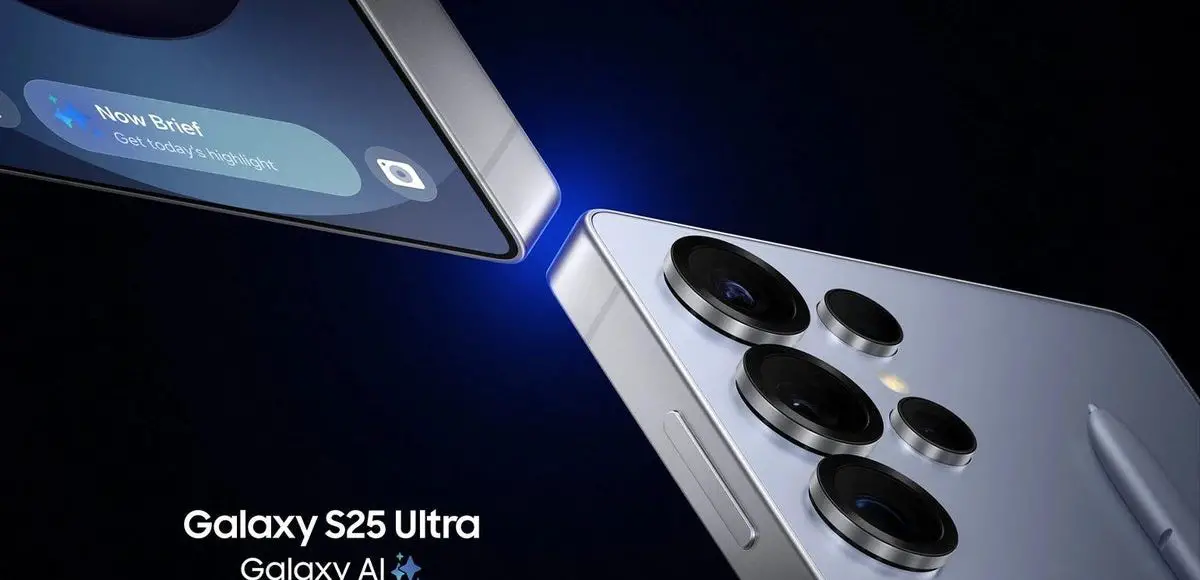Jeff Elton, CEO at ConcertAI – Interview Series
Jeff Elton, Ph.D., is CEO of ConcertAI, an AI SaaS solutions company providing research solutions and patient-centric solutions for life sciences innovators and the world’s leading providers. ConcertAI is focused on accelerating and improving the precision of retrospective and prospective clinical studies using provider EMRs, LISs, and PACSs systems as the source for all study […] The post Jeff Elton, CEO at ConcertAI – Interview Series appeared first on Unite.AI.


Jeff Elton, Ph.D., is CEO of ConcertAI, an AI SaaS solutions company providing research solutions and patient-centric solutions for life sciences innovators and the world’s leading providers. ConcertAI is focused on accelerating and improving the precision of retrospective and prospective clinical studies using provider EMRs, LISs, and PACSs systems as the source for all study data. It is a long-term partner partner with the American Society of Clinical Oncology and its CancerLinQ program, US FDA, NCI Health Equity initiatives, and almost 100 healthcare providers across the US.
Prior to ConcertAI, Jeff was Managing Director, Accenture Strategy/Patient Health; Global Chief Operating Officer and SVP Strategy at Novartis Institutes of BioMedical Research, Inc.; and partner at McKinsey & Company. He is also a founding board member and senior advisor to several early-stage companies. Jeff is currently a board member of the Massachusetts Biotechnology Council. He is the co-author of the widely cited book, Healthcare Disrupted (Wiley, 2016). Jeff has a Ph.D. and M.B.A. from The University of Chicago.
As the founding CEO of ConcertAI, can you share your vision for the company at its inception? How has that vision evolved since 2018?
We started with the idea that improved patient outcomes come from deep and actionable insights. Gaining those insights requires data completeness, data scale, data representativeness and advanced AI intelligence. So, we created a Data-as-a-Service and AI Software-as-a-Service company. We targeted AI that allows inferencing and prediction. This included predicting events to avoid, such as patients' non-adherence to their therapy or discontinuation of care because of a lack of positive response, which informed when clinical trials might be the next option.
Our vision has remained steadfast, and we continue to expect more out of our solutions. With the latest generation of LLMs, agentic AI and other generative AI solutions, we can operate at scale (and almost in real-time—something we did not expect or anticipate in 2018). With partners like NVIDIA, we can advance our solutions to perform better than expected, recognize limitations and unique characteristics, and move at the pace of the entire market’s innovations—the journey so far has been extraordinarily productive and exhilarating.
We have opened up previously unimaginable performance in clinical trial automation solutions, automating the placement of patients on evidence-based clinical pathways, advanced workflows in radiological interpretation, and the use of digital twins as a decision-enhancing tool for care and research.
Today, we serve almost 50 biopharma innovators and 2,000 healthcare providers—so while not at quite the scale of the entire market, we are the broadest-reaching AI solutions for oncology in the industry.
What inspired you to focus on oncology and hematology datasets specifically, and how did you see ConcertAI making a difference in these fields?
The United States started the “War on Cancer” in 1971 with the National Cancer Act. This catalyzed large-scale government funding, which generated insights into the mutations that drive cancers, new modalities for therapies, expanded National Cancer Institute-designated treatment centers, and more. Under the Obama administration, funding increased again by $10 billion in electronic stimulus going to the NIH and, in turn, to the NCI. Under Biden, the Cancer Moonshot 2.0 program was launched in 2022, again catalyzing an entirely new generation of research and seed funding investment for academic, community, and private-public partnerships.
I give this history because few diseases or areas of healthcare have the level of data: genomic, transcriptomic, digital pathology, digital radiology, detailed electronic medical records, etc., and the level of research that contextualizes these data with validated insights through rigorous, multi-center, peer-review studies. As further evidence, the American Society of Clinical Oncology annual meeting is the largest medical meeting in the world, with the greatest number of new publications, posters and abstracts of any scientific forum on any topic.
So, if you are going to be data and AI-centric, there are few better areas to advance solutions with confidence and at scale than oncology. ConcertAI has the largest collection of research-grade data of anyone in the world. It includes hundreds of peer-reviewed publications enabled by that data, significant evidence resulting from those publications changing how patients are treated and assuring the most positive possible outcomes, and now AI SaaS technologies that are integral to the processes of care and research that bring the power of that data and evidence to bear at all points and for all decisions along a patient’s care journey. What is really important here is that we don’t do this unilaterally. It is done transparently with our healthcare provider and biopharma innovator partners to engender the greatest confidence and use. So, we are evolving toward real-time, advanced, AI intelligence-enabled decision augmentation.
ConcertAI has become a leading player in real-world evidence (RWE) and AI technology for healthcare. What were some of the early challenges you faced in positioning the company as a leader in this space?
You have to be trusted and evolve towards being the reference source. That is earned. The trust comes from your provider partners, believing that the data you are accessing is in the best interests of their patients. Trust comes from your academic and industry partners, who see the evidence of and believe that your data is derived as a perfect reflection of the original patient records and that the concepts you advance are ‘true’ and reflective of current clinical and scientific practice. You also have to achieve a scale that your data solutions represent not only the entire population but also produce conclusions that are confidently generalizable back to the full population being treated with a particular medicine. Technology is similar. Scientists and clinicians are inherently skeptical—as they should be—and don’t trust black boxes or algorithms they don’t understand. So we needed to establish trust there, too, through publications and being open about how our solutions work.
ConcertAI holds the world’s largest oncology and hematology dataset. What unique opportunities does this data create for transforming cancer research and treatment?
I love that question. We are working on this every day! The opportunities to provide value to providers, patients and innovators are almost limitless. In early-phase trials, we are evolving study simulation approaches with digital twins that will change the programs we take into clinical trials. Our data and AI optimizations will lower the time required to go from finalized protocol to finalized submission to regulators by 30 to 40%—meaning new medicines get to patients faster. Our decision augmentation AI solutions will recommend pathways for treatment that are evidence-based and specifically tailored to those pathways, monitor responses in line with the predicted response, and look for potentially beneficial clinical trials when response or benefit is below expectations. Our imaging clinical interpretation solutions operate at the level of operational processes, clinical interpretation, and longer-term view of new interpretations or new interventions that should be considered based on insights and evidence in the future. No longer is an action “once and done” but rather it becomes “once, and then again and again” such that beneficial reassessments and future decisions are an ongoing process! What’s different here is that the view is the entire patient journey—this is a horizontal view versus a series of narrow, deep, vertical views that have to be stitched together. This is an innovation enabled by AI and a profound process change that provides new ways of working to the expert humans involved.
Can you explain how ConcertAI’s Digital Trial Solution works to match cancer patients with life-saving clinical trials? What impact have you seen so far in terms of patient outcomes?
Clinical trials are very complex and require hours of effort by a wide range of highly expert individuals. For most organizations, clinical trials are offered as a responsibility and commitment to patients where the current standard of care may not represent a viable alternative. Trials have not really been very available to patients in community treatment centers, where 80% of patients receive their care. Yet, these are the patients who will ultimately be receiving newly approved medicines. This creates a double dilemma: the majority of patients who need access to trials are limited, and those who are reflective of the ultimate standard of care population are not in the trial dataset. We set a path to resolve these problems.
The results have been great—so positive that we are going to be expanding our number of studies underway by 10x in 2025. We published this for the last American Society of Clinical Oncology meetings and in other areas. Our approach is how we think AI should be implemented—as an augmentation of expert humans where there are large capacity and talent constraints and where lives are at stake. We have developed a set of orchestrated and tuned large language models that access patient records, synthesize characteristics, and match patients to potentially beneficial trials, doing exactly what the expert humans would do—with a fully documented approach to making recommendations and assessments. In the sites where our technologies are deployed, we perform at the level of the most expert humans and accrue patients at 5x or more relative to sites where our technologies are not deployed—the research teams and biopharma innovators are both pleased, and patients benefit most.
How does ConcertAI’s AI-driven approach to trial design and patient recruitment address some of the current limitations in clinical research, such as patient diversity and trial efficiency?
I am proud of my team—they told me three to four years ago that achieving diversity is an obligation and the right thing to do scientifically. They also maintained that it is hard to do if it is manual but requires zero incremental effort if automated. So, we decided then that every dataset and AI SaaS solution would integrate diversity and social determinants of health characteristics as our standard approach. It’s not an option. It’s just what we do. Subsequently, our CARAai™ supported clinical trial design and optimization solutions can assess what ethnic, racial or economic subpopulations may be most adversely impacted by a disease, integrate those considerations into the trial design, ensure that these populations are not unwittingly excluded, and define the clinical sites most likely to assure participation and representativeness. This is where AI can be “AI for Good” and where technology does not introduce a bias but assures that biases don’t enter the process, the ultimate design, or the operational processes around the clinical trial.
What role does ConcertAI play in reducing the burden on healthcare providers and optimizing site selection in clinical trials?
We integrate the work burden into all aspects of our clinical trial solutions. First, there is a burden on the patient. This can be where the site is located, the number of visits required for a study versus the standard of care, or the clinical intensity of a study versus the standard of care, as in the case of additional biopsies. These things can determine whether the patient—or the patient in consultation with their provider—can afford to participate or tolerate and complete participation.
There is also a burden on the provider. If we can automate the identification of patients for clinical trial eligibility, minimize false positives that create work, and provide what we call “AI leverage” to the work of the Clinical Research Associated, Study Nurses, and Physicians, then the burden is lowered. The same is true of our AI Automation Solution, which allows the research team to avoid doing manual data entry—typically 2 to 4 hours at the end of the day, and often completed at home. Early on we looked at the data in the EMR—digital—being manually entered into a portal for the sponsor’s EDC. So digital data is being read and then rekeyed to become digital data again! Here, too, we are using our multi-tuned large language models—this was a real focus of the NVIDIA partnership from the beginning. We are at 55% full automation today, with a very fast path to over 80% in the coming few months. As these elements come together, we’ll get the staff time down to 10% of legacy requirements and make these studies more accessible to more patients.
Precision medicine is a key area where AI is making significant strides. How does ConcertAI’s technology contribute to more precise and personalized cancer treatments?
We’ve not discussed this too much since last year. In December 2023, we assumed responsibility for the American Society of Clinical Oncology’s (ASCO) CancerLinQ program. It is the world's largest intelligent health network, comprising academic centers, regional hospital systems and community providers. A key part of this network is implementing the ASCO Certified® quality and clinical pathway solutions. Since CancerLinQ is a ConcertAI initiative, we have been growing the network, automating precision oncology pathways, creating new digital twin approaches for augmenting treatment selection for the providers, identifying and messaging critical diagnostic tests that could inform treatment decisions, and doing the same for newly approved medicines that represent another or better treatment alternative. All of this is underpinned by our CARAai™ architecture, again a set of vision LLM and tuned oncology LLMs done in collaboration with NVIDIA. It’s amazing to see the progress being made, and we’re excited about what we’ll be publishing and presenting at next year’s ASCO 2025.
How do you see AI imaging solutions benefiting fields like oncology and radiology, especially as these fields face clinician shortages?
Great question! It is true that both the number of new oncologists and radiologists entering the field is less than the number retiring. However, patient demand is ever-increasing. So, it is the ideal area for providing AI SaaS solutions that support physician and allied care professionals in both workflow optimization and clinical decision augmentation. Radiologists and oncologists will both cite the importance of these new intelligent solutions coming into their fields specifically. Imaging is a wonderful area for AI, and its performance is exceptional. Non-inferiority studies reflect that AI models can be close to or comparable to expert humans in narrow areas. Orchestrated workflows can bring this all together. The same is true in oncology, where we are bringing together molecular test results with immune response data, predictive algorithms for resistance and other elements that will all inform the treatment decision and enable response monitoring. I’ve been in the field for years and on different sides of new innovations—what we can do now is well beyond anything we were ever able to do before, and the pace of change is amazing.
As an experienced leader in healthcare technology, what advice would you offer to new companies looking to make a meaningful impact in healthcare through AI?
You can’t be an AI company without access to data at scale. Data is the substrate for building training and monitoring models. Also, building AI solutions is a team sport. You need domain knowledge at an exceptional depth matched with a new generation of AI model development capabilities that recognizes the behaviors of different classes of AI solutions and can bring them to bear against narrow objectives, specifically tuned for human or above performance. Then, these approaches can be orchestrated in various ways to represent a new system for operating—that is where the changes occur, and the value gets delivered. Practice “AI Humility” as everything is amazing and exhibits things we couldn’t do even six months before. Yet, ‘amazing’ is not necessarily a product or a new way of working—it is just that, technology doing something new. It is the responsibility of the AI company to make it a new way of working and a new approach for delivering an astonishing level of value that was never accessible before. Finally, assume you need to demonstrate trust in business practices, AI models, and solution transparency. We’re still early in our societal journey, and we’re the ones who have to earn the trust to bring about the changes we’re capable of delivering.
Thank you for the great interview, readers who wish to learn more should visit ConcertAI.
The post Jeff Elton, CEO at ConcertAI – Interview Series appeared first on Unite.AI.





















